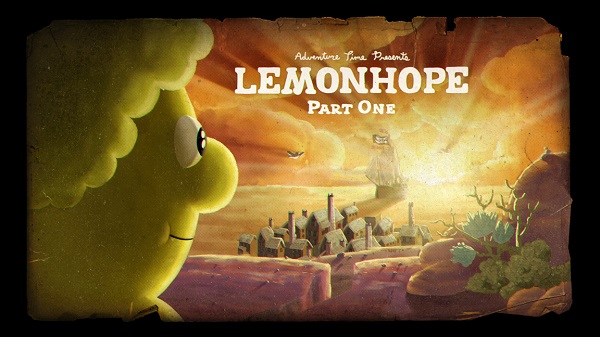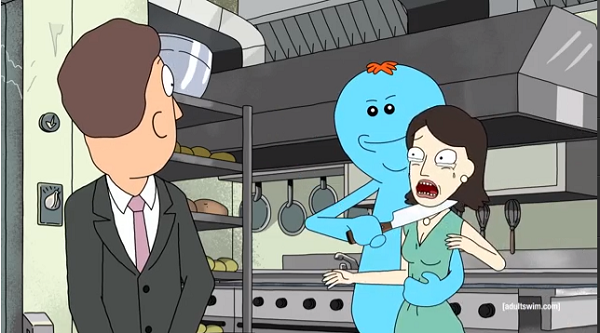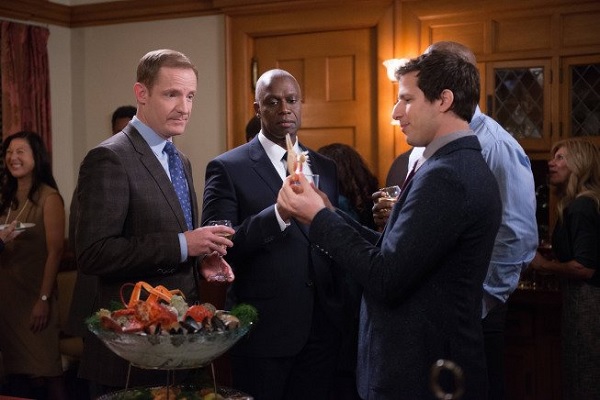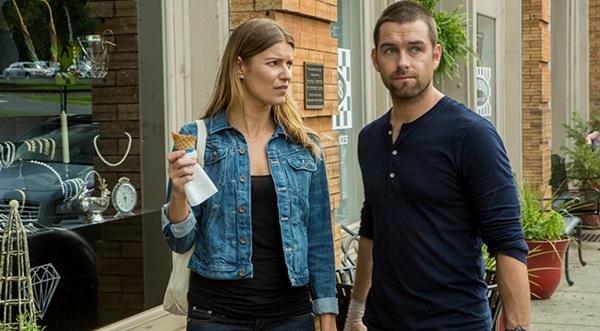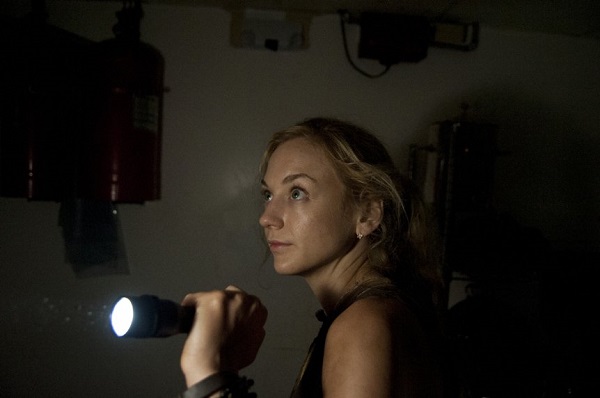2013 was an absolutely amazing year for television, with shows like Breaking Bad and Spartacus going out with some of their best episodes yet and new series like Hannibal and Orphan Black bursting onto the scene. While the jury’s still out on how this year will compare to last, at the halfway point, 2014 is shaping up to be pretty darn great year as well. Continuing favorites have come back stronger than ever and just like last year, a few new series have quickly made strong names for themselves as well; the variety of truly great television, from comedy to drama to the many series that don’t so easily fit either description, has never been so pronounced.
However, with so much TV out there, some of the best episodes (and series in general) of the year have flown under the radar, so a handful of Sound on Sight’s podcasters and critics have put their heads together and come up with a list of the best television episodes of 2014 (so far). A panel of SoS’s Editor-in-Chief Ricky D, Televerse Podcast cohosts Kate Kulzick and Sean Colletti, Managing Editor for TV Deepayan Sengupta, and SoS TV critic Randy Dankevitch have put together this list through an exhaustive nominations and voting process–to make the cut, each episode needed to have been seen by at least half the panel and agreed upon by a majority. Of course, not everyone can watch everything, and so along with the agreed-upon list, each panelist also gives an individual pick for one of the best episodes of the year. If the second half of 2014 is as strong as the first half, this year has the potential to be another tremendous one for television. Here are the SoS TV panel’s picks as the best episodes of television of the year (so far):

Community, “Cooperative Polygraphy”
Written by Alex Rubens
Directed by Tristram Shapeero
Aired Jan. 16th, 2014
It was hard to choose between the high-concept fourth episode of Dan Harmon’s concerted series titled “Basic Intergluteal Numismatics” and the fifth “Cooperative Polygraphy.” While “Basic Intergluteal Numismatics” dazzled us with a freewheeling mix of David Fincher films, police procedurals, and classic noir, “Cooperative Polygraphy” contains ample amounts of both the laughs and the deeply felt emotional core found in the best episodes of the first three seasons. It’s an episode built entirely around how much the show has changed over the years, for better or worse, and an episode that focuses on the character’s flaws while embracing them. More importantly, “Cooperative Polygraphy” is about saying goodbye to one character, and setting the stage for yet another to leave the series.
Much like season two’s “Cooperative Calligraphy,” one of the series’ high watermarks, “Cooperative Polygraphy” plays out as a bottle episode right up until the end credits. And like that episode, it traps all of the characters in the study room to examine the dynamics between them. But what elevates it above a straight rehash of “Calligraphy” is that this time, the study group is locked in a room together with a magically functioning polygraph machine that effectively works as a truth-telling spell, and are forced to answer questions designed by the late Pierce Hawthorne. Even if almost entirely dialogue-based, “Cooperative Polygraphy” is easily the best episode of the show since the third season, with joke after joke hitting the mark and every actor working off of each other in perfect harmony. And kudos to guest star Walton Goggins, who was excellent as Mr. Stone. – Ricky D.
Rick and Morty, “Meeseeks & Destroy”
Written by Ryan Ridley
Directed by Bryan Newton
Aired January 20th, 2014
The small amount of critical attention that Rick and Morty has received in its debut season has been staggering in its praise. Though the season is certainly far from flawless, Dan Harmon and Justin Roiland’s take on Back to the Future with an admittedly mentally deficient boy and his insane, alcoholic grandfather is, at times, approaching a kind of genius that is incredibly difficult to pull off with such a high concept show.
“Meeseeks and Destroy” must be the showcase episode for this, as it balances that crazy humor with intelligent commentary on form. The episode’s impetus is Morty’s frustration with not getting to choose the adventures he and Rick go on. So Rick hands over the reins and makes snide comments as Morty tries to force intrigue and excitement in a different world where the pair go to Giant Court and a bar for all kinds of entities (including a jelly bean king that…well, tries to force Morty to perform certain acts; the episode actually treats this very seriously, as the scene unfolds in a horrific and damaging way).
While Rick is busy betting all his schmeckles in card games, the Smith family is back home messing around with a Meeseeks box that Rick has left them. The Meeseeks is a being that grants one wish (“Ohhh, cann dooo!”), but when even it can’t help Jerry with his golf game, an army of Meeseeks realizes that if a wish goes unfulfilled, it might be best to kill the wisher so that they can disappear. Episodes are rarely as quotable as this one, but more impressively, they’re rarely this creative, making “Meeseeks & Destroy” one of the most entertaining episodes of the year. — S.C.
Brooklyn Nine-Nine, “The Party”
Written by Gil Ozeri and Gabe Liedman
Directed by Michael Engler
Aired Feb. 4th, 2014
Captain Holt’s sexual orientation has always been an important part of both the character and the show. However, it has not been Holt’s defining characteristic, and nor has the show become one that revolves around Holt’s homosexuality. Walking that line has been one of the aspects that has made this show one worth watching in its first season (a particularly hilarious moment in the series premiere is Peralta finally putting the clues together to figure out Holt’s gay), and it is in “The Party” that its deftness is best illustrated, leading to one of the best episodes in the medium to air this year.
The character of Kevin Cozner is a great illustration of how the show handles Holt’s homosexuality. Rather than make either of Holt or Cozner stereotypical depictions of gay men, the writers instead use the latter character to reveal more about Holt, while giving Cozner his own character shades. But it’s the last third of the episode that really elevates it. For while how Holt’s orientation has affected his job is something the show has touched on, this episode does a great job of showing just how it has affected not only Holt, but Cozner and his perception of Holt’s peers. The fact that all the clues were present leading up to Cozner’s admission is icing on the cake.
Which is not to say the episode doesn’t let others shine as well. Gina’s display of narcissism gathering an ever-increasing crowd of psychologists is hilarious, yet doesn’t get over-exposed, and Sergeant Terry’s constant attempts to ensure the group doesn’t embarrass themselves is a solid reminder of why he’s a good captain. Santiago’s attempts to find common ground with Holt, and Boyle’s discovery of someone who appreciates cuisine as well as he does are further fine touches that help elevate this episode to its place amongst the year’s best so far. — D.S.
Banshee, “The Truth About Unicorns”
Written by John Romano
Directed by Babak Najafi
Aired Feb. 7th, 2014
Banshee may, on the surface, have seemed like a show worth dismissing, particularly due to it being a Cinemax show. However, over the course of its first season, the show proved itself worthwhile, drawing audiences in with superbly visceral fights, and keeping them engaged with strong performances and well-explored storylines and character relationships. The second season continued this streak, as the ramifications of certain actions became more apparent, and the show delved further into characters, it surpassed its premiere season in the process. And with “The Truth About Unicorns”, all the show’s strengths are on display, making it one of the year’s best.
It’s incredibly bold for an ensemble show to focus on only two characters for its duration, but Banshee does just that, in the process sketching out the complicated relationship between Hood and Anastasia in full detail. The time jumps would be disorienting if they were mishandled even slightly. Instead, in this episode they serve to add to the feeling of a fleeting past and an uncertain future that clouds the interactions between the two characters. The juxtapositions of Hood’s time in jail and Anastasia’s 30-day stint show how the two have grown closer during their time apart, and the time spent in the empty house serves as a stark reminder of what could have been, both for the characters and for the audience.
As if that isn’t enough, the show manages to further pull off a tonal shift, first with the arrival of Racine, and then the announcement of the assassin’s presence. The chase in the field helps the show once again establish its superiority over most shows when it comes to action scenes, and the aerial shot of the three characters converging on each other is one of the most memorable shots in television this year. All of these aspects combine to make an fantastic episode of an above-average show, and one of the best episodes of the television year to date. — D.S.
True Detective, “Who Goes There”
Written by Nic Pizzolatto
Directed by Cary Joji Fukanaga
Aired Feb. 9th, 2014
Spread out across one southern state and two decades of time, True Detective was not just a mini-series about murder with two huge movie stars (Woody Harrelson and Matthew McConaughey), but an ambitious murder mystery anthology steeped in existential musings (mostly doled out by McConaughey’s Rust Cohle, television’s single most arresting performance of 2014) and spiritual symbolism that sent the Internet ablaze on a weekly basis (Rust Cohle memes still crack me up constantly).
Surprisingly, “Who Goes There” is the least True Detective-like episode of the show, taking a sudden turn halfway through when it begins delving into Rust Cohle’s checkered past as he prepares to go “deep undercover” once again. Slowly, the veil behind the alcoholic, cynical mess we meet in 2012 is removed–everything from Rust’s first failed marriage to his addiction problems and struggle to deal with the things he’d done and seen when working as a vice agent (including a disturbing ritual where gangsters would remove the skin from your face and then feed you your testicles). He begins taking (and faking) drugs, stealing evidence and going off the grid in the only way Rust knows how. Where some people wade through the darkness of life, Rust dives head-in, leading to the single most-talked about sequence of 2014: Fukanaga’s six-minute long shot detailing Rust’s undercover operation going to shit in the ghettos of Louisiana.
As the camera whips from Rust’s face to the spiraling chaos around him, “Who Goes There” depicts a world gone mad, a layer of Hell that brings out Rust’s instincts, treating the viewer to a violent, indescribably tense sequence of Rust in action (as fascinating as he was sitting behind a desk or rambling away in the driver seat of his pickup, a lot of his game was all-talk up to that point). Until that moment (and mostly, after that moment), chaos slowly descended on the lives of Cohle and Hart; in “Who Goes There”, it literally consumes one of them, nearly to the point of death (only saved when Marty uses some nifty driving to scoop Rust and his prisoner from the shootout). Despite how True Detective peters off in later hours, the closing minutes of “Who Goes There” remain a signature moment for the series, a truly cinematic sequence that pulls the viewer into Rust’s twisted world defined by its ambiguities, if only for a moment. — Randy D.
The Walking Dead, “Still”
Written by Angela Kang
Directed by Julius Ramsay
Aired March 2nd, 2014
It’s hard not to get frustrated with The Walking Dead, which is a series that is occasionally fantastic but often light on interesting stories. The fourth season of this insanely popular show benefited in its back half from having the core group of characters physically separated from one another in small groups. Daryl and Beth comprised one of those groups, and “Still” is an hour devoted entirely to the unlikely pair.
For all its narrative shortcomings, The Walking Dead has always been a technical powerhouse. Its direction, makeup, costuming, sound effects, and scoring remain some of its most notable strengths, and “Still” exploits all of these in rather remarkable ways. Its sparse use of dialog allows for a scene like Daryl and Beth waiting out a walker horde in the trunk of a car to shine, a moment of truly effective visual storytelling. And later, the fantastic soundtrack and beautiful cinematography of the series give added resonance when the characters are watching a house burn down.
Yet to say that the story falters in “Still” is completely off-base, since Daryl and Beth get to talk about life and death in the world of The Walking Dead. They get drunk, play games, and let off steam in their different ways. For being the series’ most popular character, Daryl is often an enigma. “Still” gives him plenty of layering, using Beth as a point of contrast in worldviews and personal experience. Both performers turn in series-best moments, with Emily Kinney being especially memorable in a moonlit scene that stands out as what The Walking Dead should rely on more: insightful and emotional character moments that show the viewers what it’s like to be in these characters’ shoes. — S.C.
Adventure Time, “Lemonhope”
Written and storyboarded by Thomas Herpich and Steve Wolfhard
Directed by Nate Cash (supervising) and Nick Jennings (art)
Aired March 10th, 2014
Every week, Adventure Time takes viewers on unique, 10-minute flights of fancy. Most episodes of this exceptional series are entertaining and creative; “Lemonhope” is something more. One of the show’s few experiments in long(er) form storytelling, it aired as a one night, two-episode event: the epic tale of Lemonhope, a boy from Lemongrab who must return to his home to free it from the horrifying regime of its violent, totalitarian dictator. The trouble is, Lemonhope really would rather not. He prizes his freedom and longs to explore the world. This beautifully rendered story not only explores the psychology of Lemonhope and the side effects the weight of expectation can bring, it subverts the Chosen One archetype in a way rarely if ever seen on television.
Opening with Princess Bubblegum’s attempts to instill in Lemonhope a sense of duty towards his fellow Lemon People, the episode follows the hero as he struggles against PB’s plans for him, a conflict that manifests itself in Lemonhope’s nightmares. Fueled by feelings of powerlessness, his series of dreams are a highlight of the episode, expressionist explorations of an unquiet mind. Lemonhope’s pursuit of freedom is initially critiqued by the episode (whose early moments could easily be read as an argument against isolationism), but in the end, “Lemonhope” surprises viewers by respecting its hero’s priorities and sparing audiences the expected Very Important Lesson ending. “Lemonhope” also manages to satirize Kim Jong-un and introduce monster hunter Phlannel Boxingday, who continues Adventure Time’s tradition of superficially endearing, but potentially morally murky, protagonists (if he’s not Princess Bubblegum in disguise, that is). The at times funny, at times moving “Lemonhope” is a wonderfully inventive and thoughtful standalone adventure from a series that specializes in them, and it’s certainly one of the best episodes of 2014 (so far). — K.K.
Enlisted, “Vets”
Written by Kate Purdy
Directed by Fred Goss
Aired March 14th, 2014
Very few shows had a first season as strong as Enlisted, which took a number of elements rarely seen in television, and made them all work effectively together nearly from the first week. From the exploration of brotherly bonds to the depiction of soldiers of all stripes, and even the difficulty women have in the military, the show managed to set itself apart from the start. It only got better from the series premiere, until it hit an episode that takes a place among tv’s best of the year; Vets.
What makes this episode so powerful is its ability to tackle an important issue like veteran PTSD in an effective manner. Pete’s difficulty in adjusting to being back home is something the show had touched on previously, and this episode puts the delicate handling of the issue on full display. The issue manages to be ever-present without being overbearing, and despite the light-hearted tone of the main storyline, Pete’s issues are never played for laughs. At no point does it get trivialised, and the final conversation between Pete and Patrick, and Pete’s resulting action, thus gets the amount of gravity deserving of such an issue.
Despite this, however, the episode still manages to be hilarious. Stacy Keach, Dean Stockwell, and Barry Bostwick are more than game for their roles, and the constant reminders of the fun the rest of the group is having remains hilarious without becoming tiresome. The focus on Pete doesn’t mean that the other brothers don’t get their own moments to shine, as both Randy and Derrick get advice from their doppelgangers that similarly feels earned. The coin theft scene in particular is a great example of how the show manages to mine comedy without making its characters the butt of the jokes. This episode, in addition to being a great showcase for the series, is a wonderful display of how to properly balance comedic and dramatic issues, making it one of the best episodes on television this year. — D.S.
Review, “Pancakes. Divorce. Pancakes.”
Written by Andrew Daly
Directed by Jeffrey Blitz
Aired March 20th, 2014
Although there were signs that Forrest MacNeil’s (Andrew Daly, who adapted the show from an Australian series) professional and private lives were uncomfortably bleeding together in the first two episodes of Review, “Pancakes. Divorce. Pancakes.” is really where Review‘s story begins and MacNeil’s life starts coming completely undone. What begins as an innocent attempt to eat fifteen pancakes (a life experience suggested by a “viewer”, as always) turns into the show’s single darkest hour, when Forrest takes on the task of reviewing divorce–by divorcing his own already on-the-fence wife Suzanne (Jessica St. Clair), who subsequently realizes how messed up her life, and husband, have become.
The first few episodes of Review felt like simple, effective satire, taking shots at reality shows, critics, and faux-celebrities alike, as Forrest “reviews” things like addiction, robbery, and being a racist. “Pancakes. Divorce. Pancakes.”, however, is the episode where Forrest spins his entire life out of control with one action, a decision that he spends the rest of the season trying to undo (even after his wife begins sleeping with her divorce lawyer in subsequent episodes), with increasingly uncomfortable and hilarious attempts to “have it all” (that is, save his family while still going the extra mile for his television show).
Not only is “Pancakes. Divorce. Pancakes.” one of the show’s funniest episodes (his review of eating 30 pancakes after his wife agrees to get a divorce is absolutely hilarious), but it widened the show’s scope to unveil just how desperate our brown-suit wearing host really was to get famous, his own life be damned. In our reality-obsessed world full of people willing to degrade themselves for fame and money, Review revealed itself not just as a satire, but an absurd social commentary about how separated we’ve become from our own life experiences (turning to others to review them for us) and how desperate one man (and by proxy, millions of Americans) can be to turn their life into paid entertainment. — Randy D.
Part One / Part Two / Part Three / Part Four / Part Five

